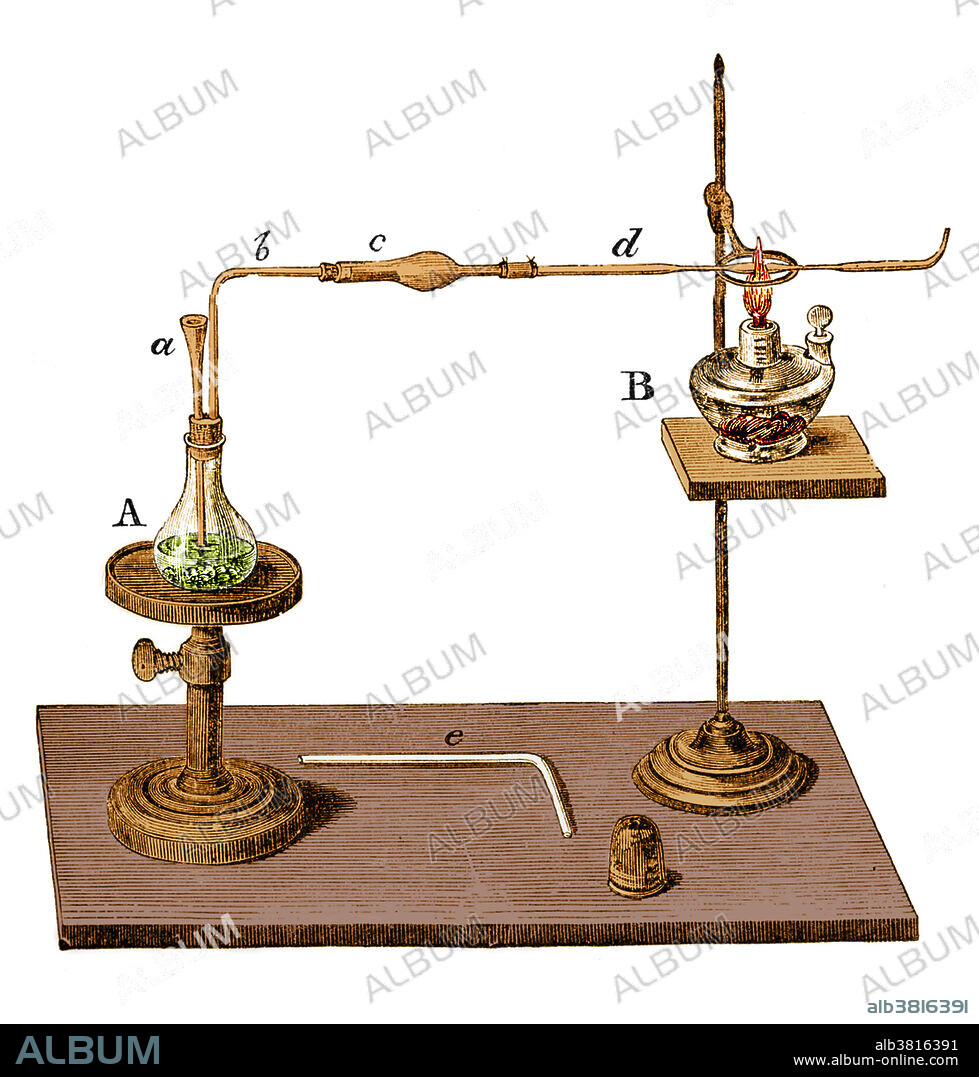alb3816391
Marsh Test Apparatus, 1867

|
Zu einem anderen Lightbox hinzufügen |
|
Zu einem anderen Lightbox hinzufügen |



Haben Sie bereits ein Konto? Anmelden
Sie haben kein Konto? Registrieren
Dieses Bild kaufen

Titel:
Marsh Test Apparatus, 1867
Untertitel:
Siehe automatische Übersetzung
Marsh Test Apparatus, Steel engraving, 1867. The Marsh test is a method for the detection of minute amounts of arsenic in foods (the residue of fruit spray) or in stomach contents. The sample is placed in a flask with arsenic-free zinc and sulfuric acid. Arsine gas (also hydrogen) forms and is led through a drying tube to a hard glass tube in which it is heated. The arsenic is deposited as a mirror just beyond the heated area and on any cold surface held in the burning gas emanating from the jet. Antimony gives a similar test, but the deposit is insoluble in sodium hypochlorite, whereas arsenic will dissolve. The test was named for its inventor, the English chemist James Marsh.
Bildnachweis:
Album / Science Source
Freigaben (Releases):
Model: Nein - Eigentum: Nein
Rechtefragen?
Rechtefragen?
Bildgröße:
3000 x 3138 px | 26.9 MB
Druckgröße:
25.4 x 26.6 cm | 10.0 x 10.5 in (300 dpi)
Schlüsselwörter:
ARSENIK • CHEMIE • DIAGRAMM • FARBE • FARBIG • FORSCHUNG • GAS • ILLUSTRATION • ILLUSTRATIONS • KALT • SAEURE • SÄURE • WASSERSTOFF • WISSENSCH.: CHEMIE • ZINK (METALL) • ZINK
 Pinterest
Pinterest Twitter
Twitter Facebook
Facebook Link kopieren
Link kopieren Email
Email
